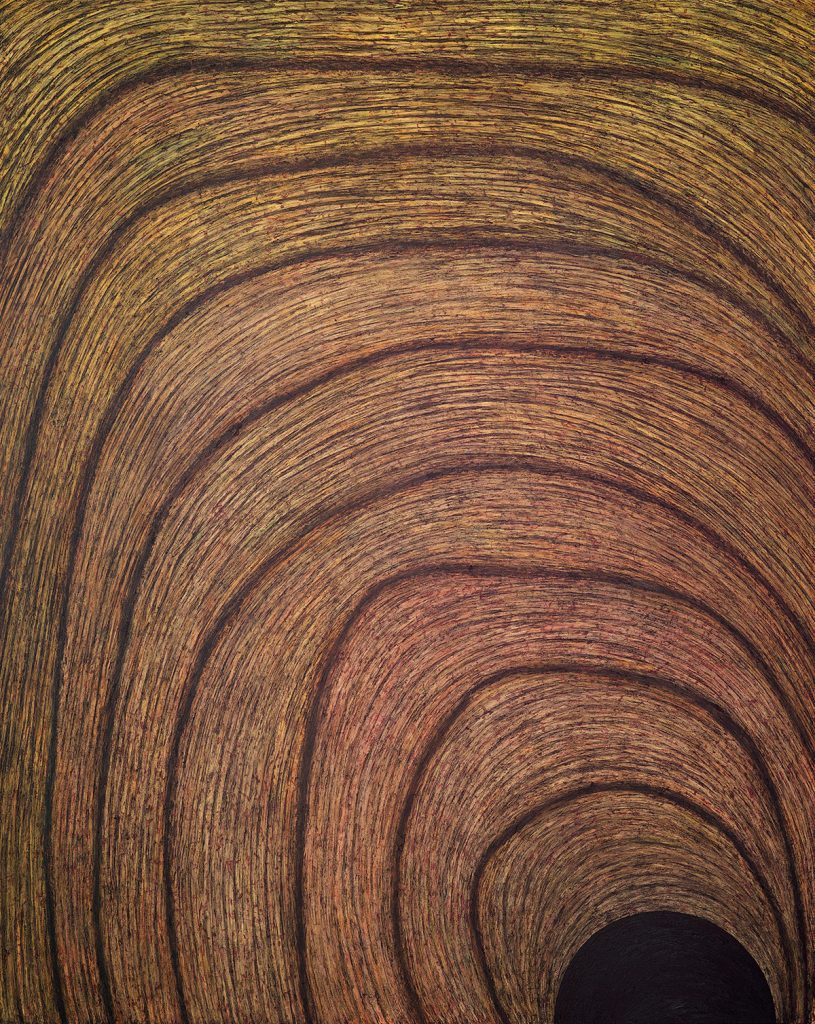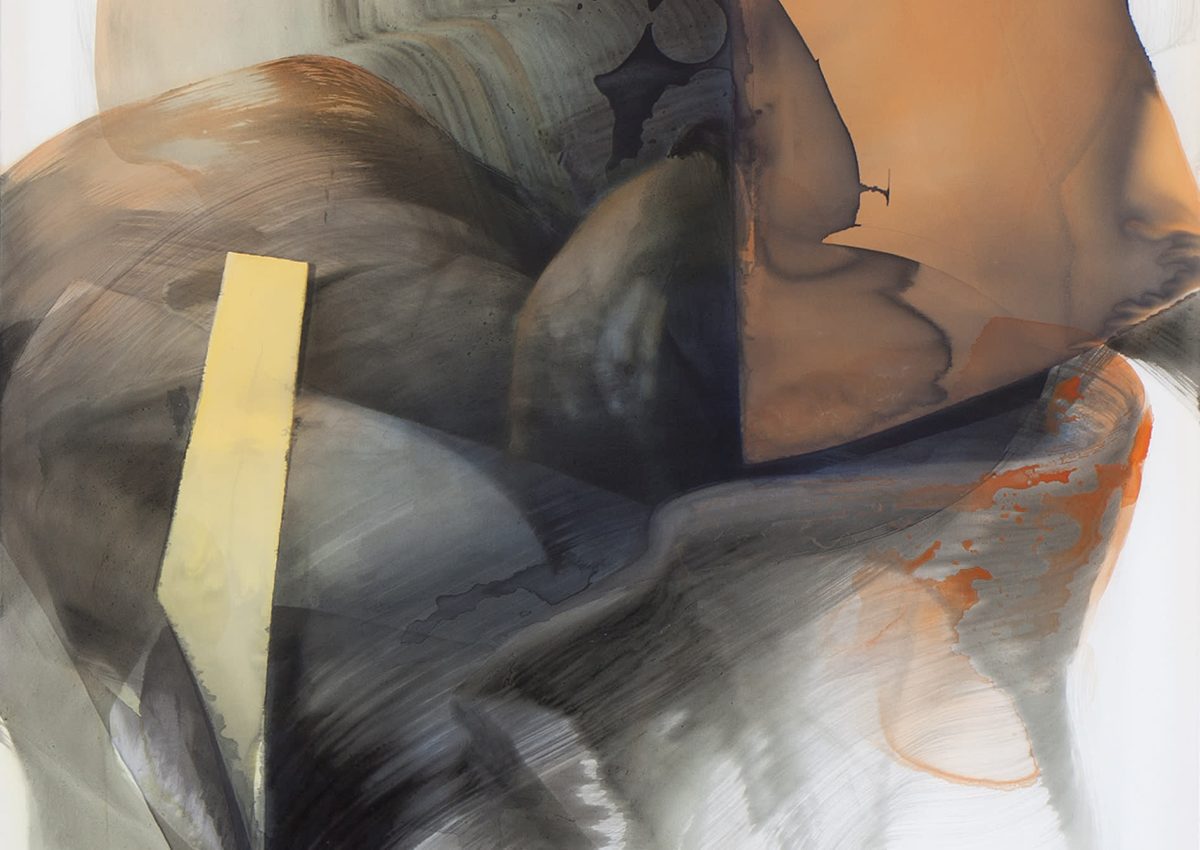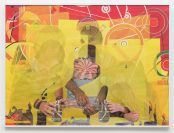According to American artist and writer Leonard Koren, the ancient Japanese philosophy of wabi-sabi ’is a beauty of things imperfect, impermanent, and incomplete. It is a beauty of things modest and humble.’ As such, it’s a concept that’s often related to natural or handmade forms in resistance to the sleek, shiny aesthetic of mass-produced objects.
For artists whose practice centres around material and spontaneity, it’s easy to see the appeal of wabi-sabi as both an approach to art-making and a lens through which to view the work. While it’s unlikely all nine of the artists in Kristin Hjellegjerde Gallery’s latest group exhibition are equally committed to the concept, they undoubtedly share a deep, exploratory interest in the process of making, and their work invites the viewer to become an active part of that process through the act of looking.

German artist Natascha Schmitten applies paint and ink in billowing brushstrokes onto a diaphanous nylon to create ethereal, hanging forms. The two paintings on display are titled Poise I and Poise II, referring to the scientific unit of viscosity or the movement of liquids, but they’re deeply emotive and poetic works that seem to capture something beyond physical materiality, a kind of inner turmoil.
Alisa Sikelianos-Carter’s mixed-media works share a compelling lightness of form with a more narrative approach. One of her pieces depicts graceful figures tumbling through a blue, underwater world while the other is rendered entirely in black with curved lines and shapes formed from black glitter. Both works possess a compelling dream-like quality that’s accentuated by the comforting repetition of forms.

By contrast, Brazilian artist Gabriela Giroletti’s richly detailed canvases convey a powerful sense of earthliness, that makes for a quieter, more meditative viewing experience. The painting entitled 2 Leap Years, for example, depicts a small black cave-like void in the right hand corner out of which imperfect arches, painted in lines the colour of straw, expand, increasingly widening, to fill every inch of the canvas.

Adeline de Monseignat’s sculptural objects – a marble sphere, and six steel rods, arranged against a wall, each one’s top increasingly curved – appear strikingly still and minimal against the vibrant colours and intricate details of some of the other works, but they deserve, and reward deeper contemplation. As you gaze at the sphere with its web of rose-coloured lines and a black protruding lid (or top), it seems to evoke the shape of a bulbous, veined eyeball, while the rods appears reminiscent of an ageing spine.
In a similar way, many of the other works disrupt expectations either through their materiality or their ability to transform before the gaze. It’s exciting to stand in front of work that’s not just visually diverse, but also surprising and intellectually engaging.
“Wabi-Sabi” (Cigdem Aky, Jack Bidewell, Gabriela Giroletti, Emilia Kina, Adeline de Monseignat, Natascha Schmitten, Alisa Sikelianos-Carter, Panos Tsagaris, Adia Wahid) runs until 12 June at Kristin Hjellegjerde Gallery, Bermondsey. For more information, visit: kristinhjellegjerde.com
Featured Image: Natascha Schmitten, Poise II, 2020, ink, oil on nylon. Courtesy the artist and Kristin Hjellegjerde Gallery

Millie Walton is a London-based art writer and editor. She has contributed a broad range of arts and culture features and interviews to numerous international publications, and collaborated with artists and galleries globally. She also writes fiction and poetry.



















